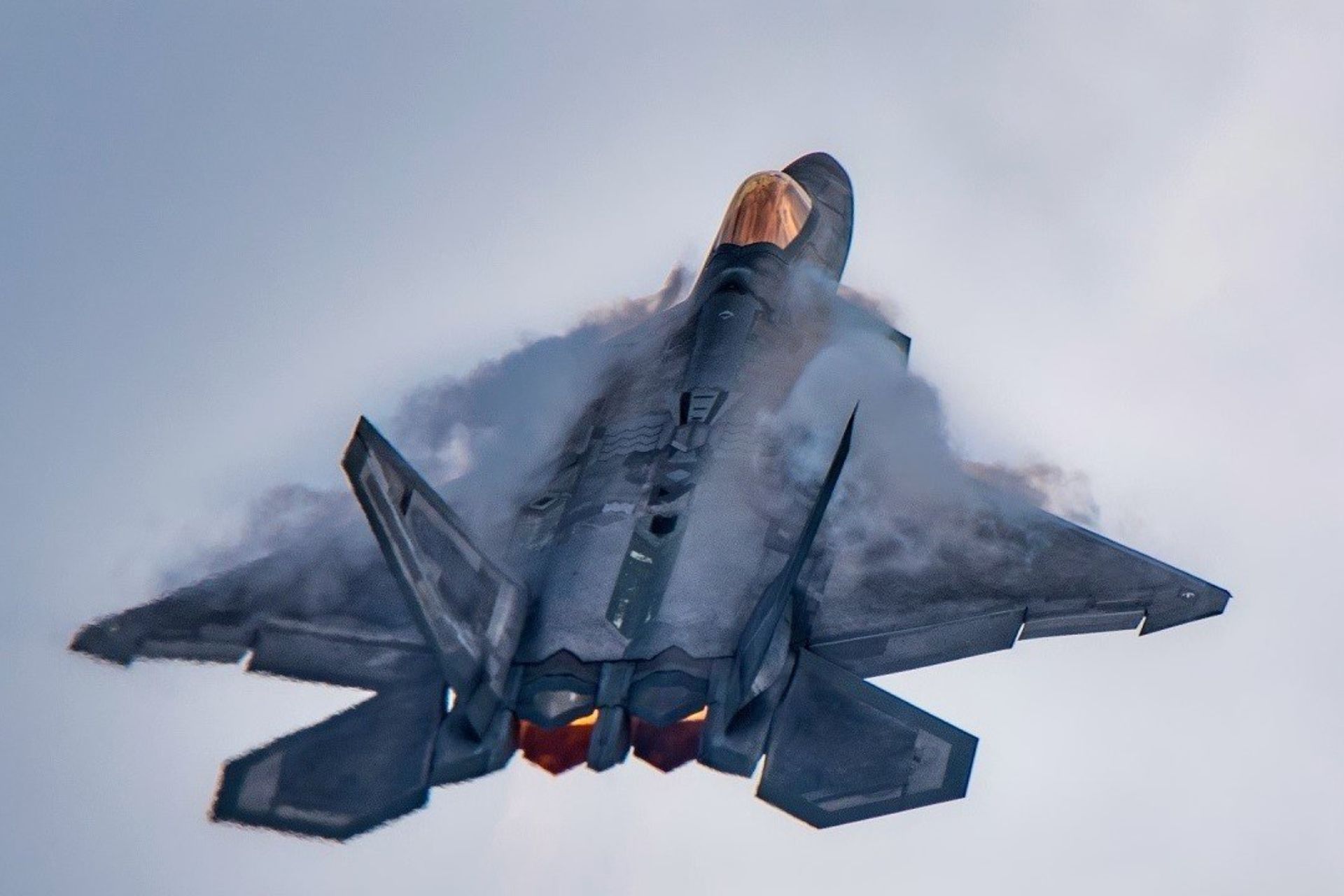Breaking News
Iconic stealth fighter, F-22 Raptor, is set to receive new countermeasures ensuring its continued use.
The U.S. Air Force's Lockheed Martin F-22 Raptor remains the premier air superiority fighter in service today, but the Pentagon is looking to enhance the capabilities of this fifth-generation stealth fighter. It awarded a firm-fixed-price contract of $11.7 million to Armtec Countermeasures, under which the defense contractor will provide its RR-196 countermeasure flares for the Raptor. The Air Force Life Cycle Management Center at Hill Air Force Base (AFB) in Utah is the contracting activity for the program.
Follow Army Recognition on Google News at this link

F-22 Demo team during Air show , place and date unknown (Picture source: US DoD)
This contract pertains to the pulse cartridge program and is used by F-22 aircraft for combat and training purposes. The work will be performed in Lillington, North Carolina, and is expected to be completed by September 30, 2027. This contract was a sole-source acquisition. Funds for fiscal year 2024 munitions totaling $11,700,000 are obligated at the time of the award,” announced the U.S. Department of Defense (DoD) on Friday. In addition to Lillington, Armtec also has facilities in Coachella, California.
The Raptor is known for its stealth capabilities, truly a product of the "space age," while the development of flares actually dates back to the early days of World War II. Yet, although it was determined to be quite effective at countering radars, a concern during the war was that there was no effective "counter-countermeasure," and the British military chose not to use it until the end of the war so that the Germans could not gain a similar advantage. Over 80 years later, the latest flare is more than just a strip of copper cut into strips or small pieces, as was the case in the 1940s! But there is still more to discover. It can be dispersed to mask a target or, ideally, present a larger but false target on a missile's radar.
“Flares have remained a favorite countermeasure to neutralize AShM radars emitting in X-band frequencies from 8.5 GHz to 10.68 GHz. X-band dipoles were relatively easy to produce. For flares to be effective against radars at 8.5 GHz, the dipoles should have a length between 17.63 mm and 8.81 mm. For flares to be effective against radars at 10.68 GHz, dipole lengths would need to be between 14 mm and 7 mm,” explained Defense and Security Monitor.
There are two types of decoys: heat decoys, which produce more heat than the aircraft engines, causing the infrared-guided missile to "forget" the aircraft; these decoys have not seen much innovation. However, flares are merely pieces of metal, often aluminum, which reflect radar disturbances.
Although Armtec did not specify exactly what distinguishes its flares from its competitors, they noted that their radar countermeasure flares are designed to deceive radars and/or radar-guided missiles. Their flare products offer broad frequency coverage, high radar reflectivity, and minimal bird nesting. Armtec flares are available in bands from S-band to Ka-band and can be customized to meet specific customer requirements. In other words, the new flares will bring improved efficiency with fewer systems deployed, and developments are focused on reflectivity.
Neither the DoD nor Armtec specified how many Raptors will be equipped with the RR-196 countermeasure, but in addition to its use with combat aircraft, the Armtec countermeasure will also be used for training purposes.


























